LP: Can you recall what year it was when you and your husband [Hendrick Conover] moved to New York?
MC: '61.
LP: Ok, so that's around the same time you got the Reader's Digest job that I have...
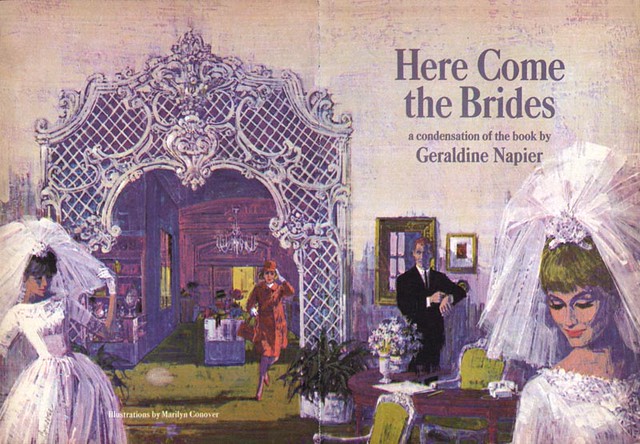
MC: Oh, it's in there some place. Yes! I remember I was doing one of the illustrations on a packing box in my studio. So yeah, that was '61, '62.
LP: Marilyn, I'm glad I found you and I really, really appreciate you taking the time to tell me all these details...
MC: Well bless your heart. They were a wonderful bunch; Joyce Ballantyne was a darling, Gil Elvgren was a darling, I mean we used to be up at their houses all the time. He was a sweetheart but they all drank like crazy.
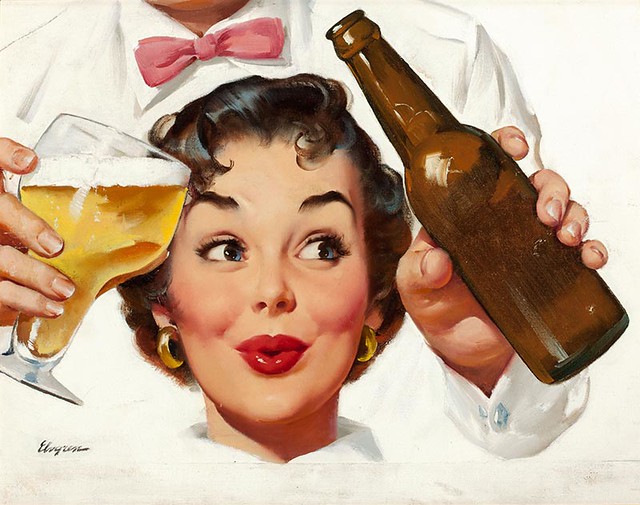
MC: Oh my god... but generous - at thirty five he was taking everybody in the studio to lunches at one of the jazzy restaurants all the time. I mean he lived like a little chubby king and he had these little chubby hands of his and he'd paint these beautiful girls!
LP: (Laughing) Wow!
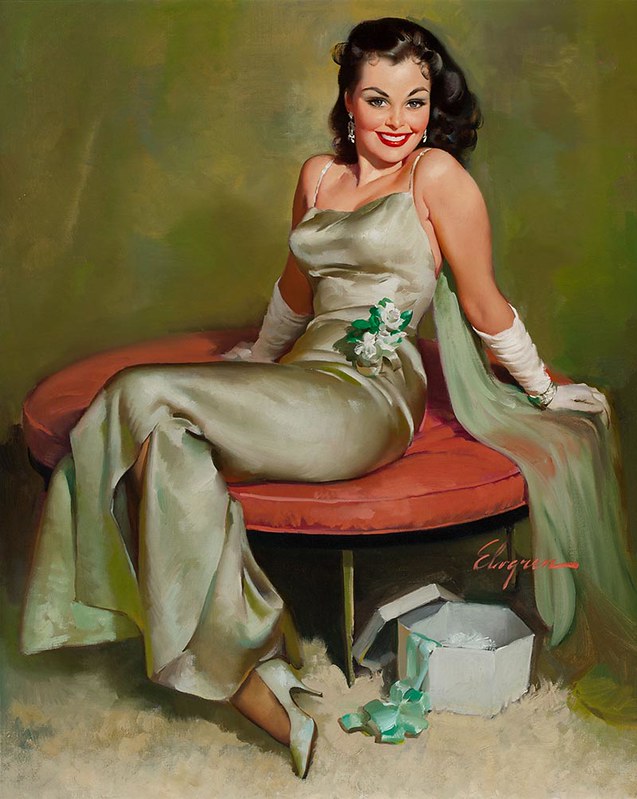
MC: And you say his originals are now going for two hundred -- I hope to god his two boys reaped some reward from that - no, I bet they belong to the, uh...
LP: Brown & Bigelow? The calendar company?
MC: Oh my god. And his kids are probably just making an average living. And they [Elvgren's originals] sell for up to three hundred thousand?
LP: Yeah, he's one of the most collected pin-up artists in the world now. There are several giant, heavy coffee table books of his pin-ups now, and every year they reprint them on all kinds of calendars and other merchandise.
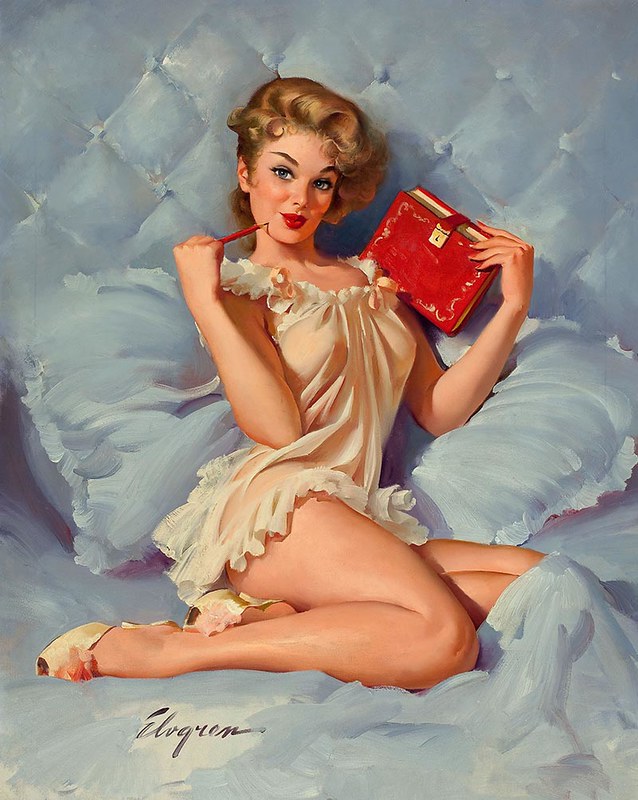
MC: And that crappy work to look at?! To be buying and hanging those paintings?! Where would you put them? In your bar? In your bathroom?!

LP: Well, there's a lot of interest and affection in a nostalgic way for that era. I mean that's part of the reason I like it. I admire the quality of the work that was done back then.
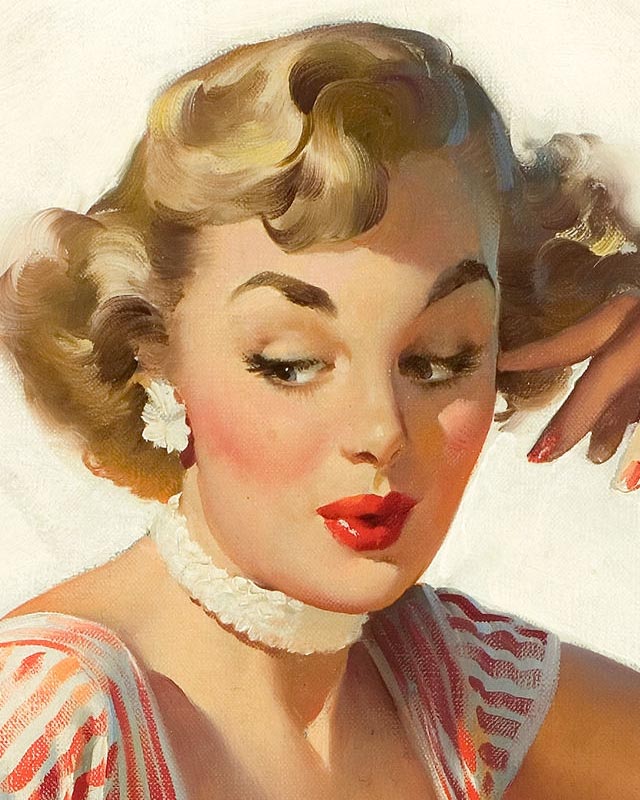
MC: What is the point of your obsession? I mean what are you doing with it? Just to do it?
LP: I do it because I discovered there were all these people like yourself who came before me in this profession who did amazing work but are largely forgotten and I just didn't think that was right. I thought it was a shame that people like myself who were graduating out of art school had never heard of Al Parker or Joe Bowler or any of these artists.
MC: Joe Bowler was another guy who did just incredible work.
LP: Oh yeah.
MC:I knew him as well, in New York.
(Below, Joe Bowler illustration, Saturday Evening Post, 1962)
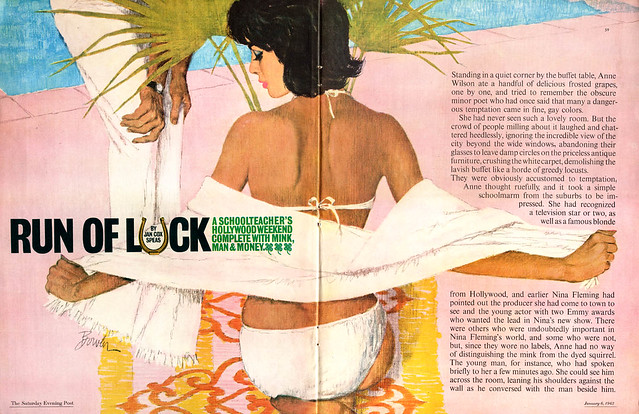
LP: Yeah, well, so I figured, if I hadn't heard of these guys then I knew for a fact most of my peers wouldn't have heard of them either and... I wanted to correct that. I wanted to make sure that all the people like you and all these others -
MC: Well what are you gonna do, write a book?
LP: No, no, I write about it every day on the internet, on my blog.
MC: Well good luck honey. And what do you do for a living? You're an illustrator?
LP: I'm an illustrator, yeah. I do finished illustration and storyboards. Now I do mostly storyboards because there's not that huge of a market for finished illustration anymore.
MC: No there isn't. There isn't. You look in your magazines and you don't see illustration anymore.
LP: No. No, most of us who are able to make a pretty good living at it now do what's broadly called "concept art." Every sort of artwork you can imagine for the preparatory stage of something else, whether it's an ad or a movie or a video game... all that stuff has to be visualized before they do the final version of it.
MC: I see. Well bless your heart. Well good luck with all you're doing and um... I don't think I could be of much help anymore. I think I told you everything. Unless you have something very specific you can call me. But I don't want to go back there. Ugh. You have no idea how funny I feel physically right now. Ugh.
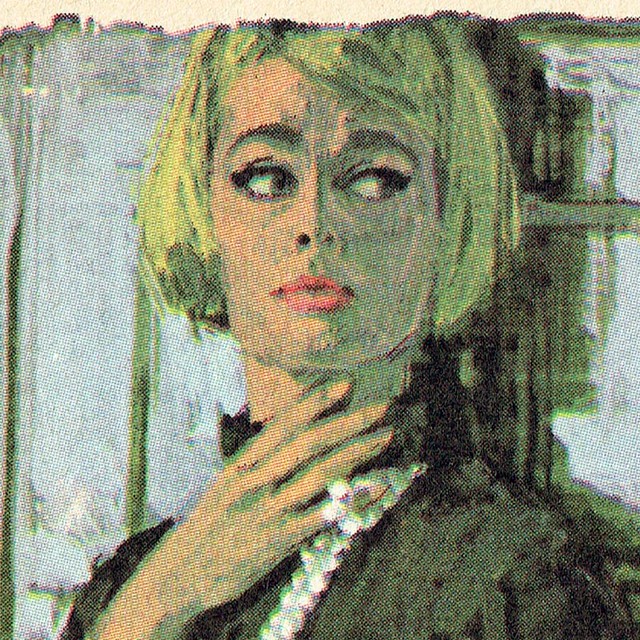
LP: Really? I'm sorry...
MC: No! Isn't that funny? Because it brought up those difficult years - I mean for me. It was the pressure - I mean, with all those competitors, you had to be good. You had to be. And the cream of it was, at that time illustrators were working for Time magazine, doing covers and that I was very proud of. I was separated by then and worked alone so much that when my first cover - you wouldn't even know him - the energy czar from the '60s - it was my first Time cover. And I even got called by one of the older illustrators to tell me what he thought of the integrity of the painting and "blah, blah, blah," you know.
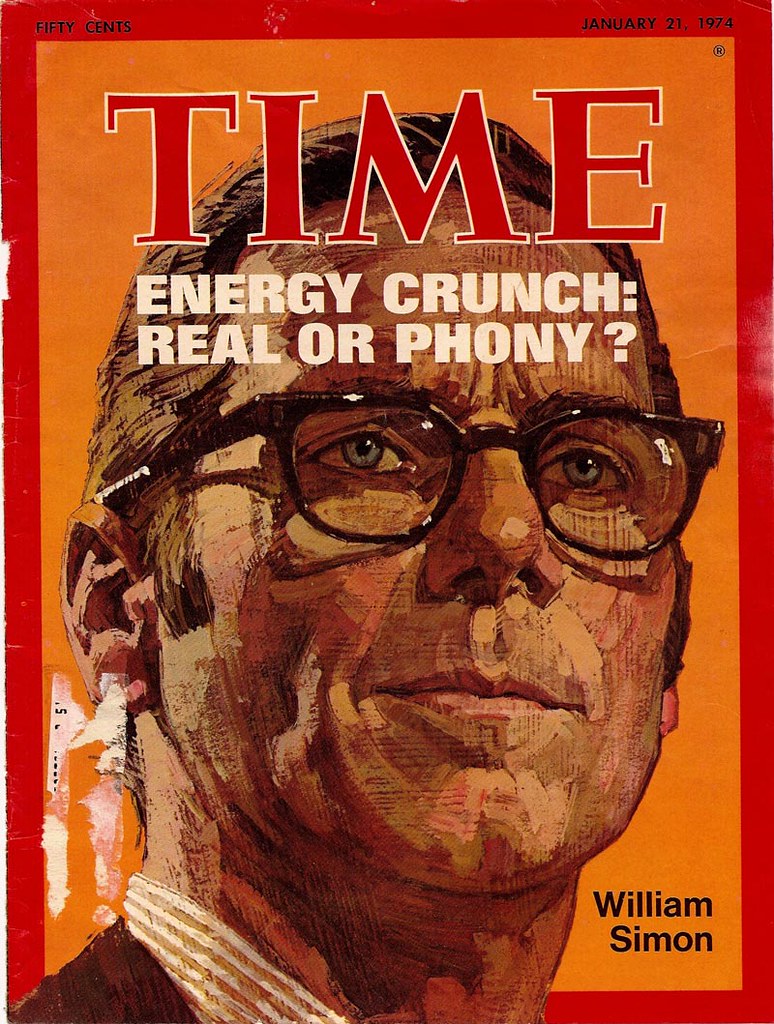
MC: So one day I just got on the train from Westport and went in to New York and walked all around Grand Central Station and saw my painting on every newsstand. I just thought, "I'll be damned." And I didn't really feel anything... because of all the difficulties I'd been through. And I looked around and I just thought, "well, there it is, that's that." And I just got on the train and went back home.
LP: Wow... that was William Simon.
MC: How'd you know?
LP: I just looked it up on the internet. I just typed your name into Google Image Search and one of the first images that came up was that Time magazine cover.
MC: You mean you can see the picture?
LP: Yeah, I'm looking at it right now. It's got a bright orange background...
MC: And there was also one when Patty Hearst went missing - I did the Patty Hearst...
LP: Oh, well I'll search for that one as well.
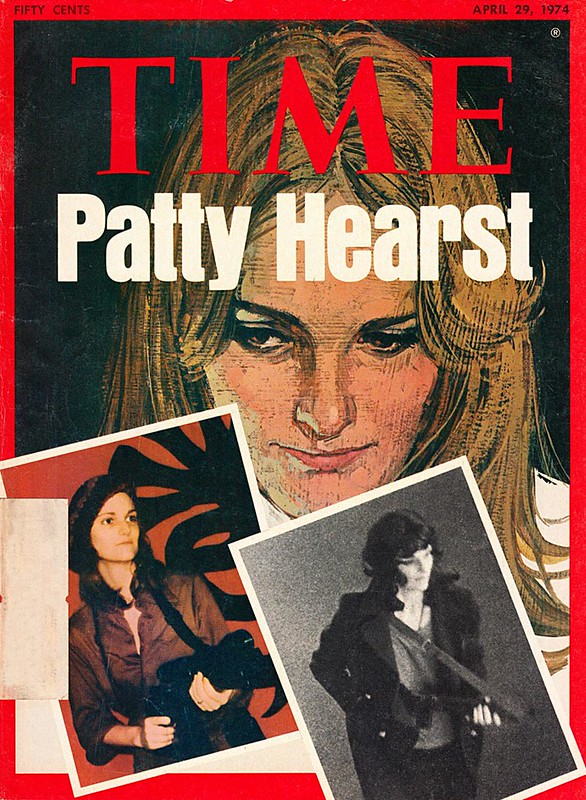
MC: ...and then the other one was the gal who wrote... oh my god, she wrote one of the big books at the time... oh well, it doesn't make any difference.
[Marilyn was thinking of Colleen McCullough, author of The Thornbirds. I was unable to locate a scan or photo of that cover ~ L]
MC: Well, honey, if you need anything specific, if you think I can help, I'd be happy to. Ok?
LP: Thank you so much, Marilyn. You have a great day.
MC: Ok, you too, bye bye.
* The original paintings from Marilyn Conover's three Time magazine covers were donated by the publisher to the Smithsonian Portrait Gallery.
Thanks to Heritage Auctions for allowing me to use some of the Gil Elvgren scans from their site in today's post.
Wow--what a terrific interview series this was. Fascinating to read Marilyn's thoughts and feelings about it all. Thank you, Leif!
ReplyDeleteThanks for sharing this Leif- Great to get a little slice of what the industry was all about back in the heyday.
ReplyDeleteThis has been a great, heartbreaking series. The biggest surprise of all is that she waited UNTIL THE END to ask you what you were going to do with all of this. "Write a book???" That's terrific.
ReplyDeleteThanks for your comments, guys. It's been fun to listen to Marilyn on the recording again after so much time has passed, and to share our discussion with you. I hope the emphasis I included on certain words gave a sense of her tone of voice. She had a very animated way of speaking. She kinda scared me, actually... ;^)
ReplyDeleteLeif, thank you for giving your audience insight into these artists. If not for you, their stories would never be told, and that's a shame.
ReplyDeleteI love all of your interviews, Leif. They are historical treasures. But I think I enjoyed this one the most. Honest and real. I think Marilyn probably has a book in her! Thank you so much and keep them coming!
ReplyDeleteThanks for your encouragement, guys - I plan to keep at it for a long time to come. :^)
ReplyDeleteI agree with the other commenters, Leif. Marilyn was a real pistol and it was fun to read her unvarnished opinions-- Thank you for recording them, I'm glad you printed them verbatim, rather than smoothing her out.
ReplyDeleteTo quote Marilyn, "Good luck honey."
I am sad to hear that art graduates aren't given the opportunity in school to learn the history of American illustration. I am so grateful that yourself and others are archiving the golden era of illustration on line. I grew up with these illustrators work in our magazines and hand rendered art in daily newspaper advertising. I saw the change happen from hand rendered to computer generated art. I miss it. Maryilyn and her peers were incredible artists. This interview was a real gift. A really incredible interview. Thank you. Betty
ReplyDeleteI hadn't read this until now, because Conover was one of those illustrators whose work I just did not like, and after reading your interview, I think I know why. She was competent, no question, but her work seems rote to me. She adopted all the mannerisms of the 60s-70s — the fake texture in gesso, the non-spontaneous alla prima strokes, the patterned backgrounds, the 'perfect family' tropes — without giving us the feeling that these people were actually enjoying themselves, or the products advertised. And I think that's because she evidently didn't enjoy doing the work at all. Perhaps that's because she felt her husband should have been better, or her hours were too long, or she chafed against the art direction, but for whatever reason, her heart wasn't in it. That's why she could see her work all over Grand Central Station and feel nothing. And why her reminiscence of the era held so little sense of reward from doing the art itself. Whereas it's self-evident that her heroes — Gannam, Fuchs, and Elvgren — loved what they were doing. — Roger Reed
ReplyDeleteAs much as I greatly respect Roger Reed, I think he's wrong in his assumption that Conover didn't enjoy doing her work at all. Doing the work is one thing, the industry and the competition at the time is something else entirely. If anything, I think her heart was in the work, not the business.
ReplyDeleteLooking for a good spying application? Recommend to read this post first.
ReplyDeletesitus judi online
ReplyDeletempo99
This is a really instructive post, you're an incredibly skilled blogger. I've joined your blog searching for a more noteworthy measure of your brilliant post. Moreover, I have shared your site on my informal communities!
ReplyDeleteiso certification in saudi arabia
iso 9001 certification in saudi arabia
attitude status for girls in hindi
ReplyDeleteattitude status for girls in hindi
attitude status for girls in hindi
attitude status for girls in hindi
attitude status for girls in hindi